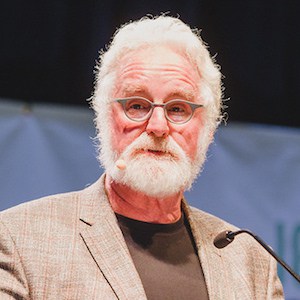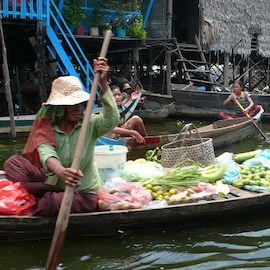How the World’s First Social Sustainability Bond is Connecting Back Streets to Wall Street
Impact investing is more than an emerging asset class. In a world where business models and financial equations often perpetuate inequality, impact investing is an opportunity for systemic change. If approached pragmatically and innovatively, it can transform our traditional financial system into one that offers economic opportunity to even the most remote and underserved populations. As impact investing gains traction and becomes one of the most rapidly-growing fields of investment, it is crucial to harness its power to promote equity and inclusion in financial markets.
An area where impact investing can make great strides is women’s economic empowerment. Accounting for half of the world’s population, women are at the heart of development and are the backbone of rural communities, fueling local and global economies. Yet, women face some of the strongest discrimination and economic restraints worldwide. For example, according to reports by the International Finance Corporation (IFC), only about 10 percent of women entrepreneurs globally have access to the capital they need to expand their businesses (2012, IFC) and women face a credit gap of approximately USD $320 billion (2010, IFC). In Asia, inequality forces women and girls to face persistent structural constraints, which limit their market access, credit access, and productivity.
Impact investing has the capacity to effectively reverse many of these trends. Drawing on over eight years of experience in the field, the Impact Investment Exchange (IIX) has detected that, in order to drive inclusion through impact investing, progress in the following areas is crucial: creation of innovative financial products that link underserved communities to global markets; development of investment opportunities for high-impact enterprises at various stages of growth; collaboration among a diverse set of stakeholders across geographies and sectors; and establishment of de-risking mechanisms and enabling policies to attract investors and support development.
Recognizing the need for a solution which addresses these areas, IIX focused its energy on creating an innovative financial instrument that would assist women across Southeast Asia in overcoming barriers to capital access and connect them to mainstream financial markets—an opportunity unforeseeable for most of these communities. As a result, the USD $8 million Women’s Livelihood Bond (WLB) gives the Cambodian woman entrepreneur, the Filipino farmer, and the Vietnamese mother access to capital by providing loans to high-impact enterprises and microfinance institutions (MFIs) whose activities benefit over 385,000 women in Southeast Asia. This will in turn help them transition from subsistence to sustainable livelihoods and redefine the dominant narrative of viewing women as victims to recognizing them as solutions to development, change and progress.
The WLB is the world’s first social sustainability bond with a dual focus on social and financial returns to be listed on a stock exchange and an immense achievement for impact investing. The bond is listed on the Singapore Exchange, bringing impact investment from the margins to the mainstream. Meticulously constructed to cater to the needs of all parties involved, the instrument’s unique structure mitigates risk for investors by pooling together a group of MFIs and high-impact enterprises benefiting women, and ensures social impact through rigorous due diligence and monitoring processes for borrowers of the bond. It also includes a number of credit protection features, including USD $500,000 of first-loss capital provided by IIX, as well as a 50 percent guarantee of the principal amount of the underlying loan portfolio, provided by the U.S. Agency for International Development (USAID).
The bond’s ability to bring together prominent partners from the public, private and philanthropic sectors worldwide is a testament to the global interest and strong belief that inclusion and positive impact can be generated alongside financial returns. Stakeholders of the WLB included Shearman & Sterling; Hogan Lovells; the Rockefeller Foundation; USAID; the Clinton Global Initiative; ANZ Banking Group; the Japan Research Institute and the Australian Department of Foreign Affairs and Trade (DFAT), among others. The multi-stakeholder approach taken in designing this bond makes the instrument a milestone for innovative finance and signals an emerging push from actors across sectors for inclusive financial instruments.
The WLB is just the beginning. The listing of this bond signifies the important role that impact investing can play in enhancing market access to underserved communities and addressing sustainable development challenges. As social sustainability bonds like the WLB replicate, scale and populate stock exchanges across the world, both social and mainstream exchanges, impact investing will no longer simply be an emerging asset class. Rather, impact and inclusion will become factors engrained within the world’s business and investment decision-making processes.
Photo credit: World Bank Photo Collection, via Flickr.
Rakhi Sahay is head of Knowledge Management at Impact Investment Exchange (IIX).
- Categories
- Impact Assessment, Investing



